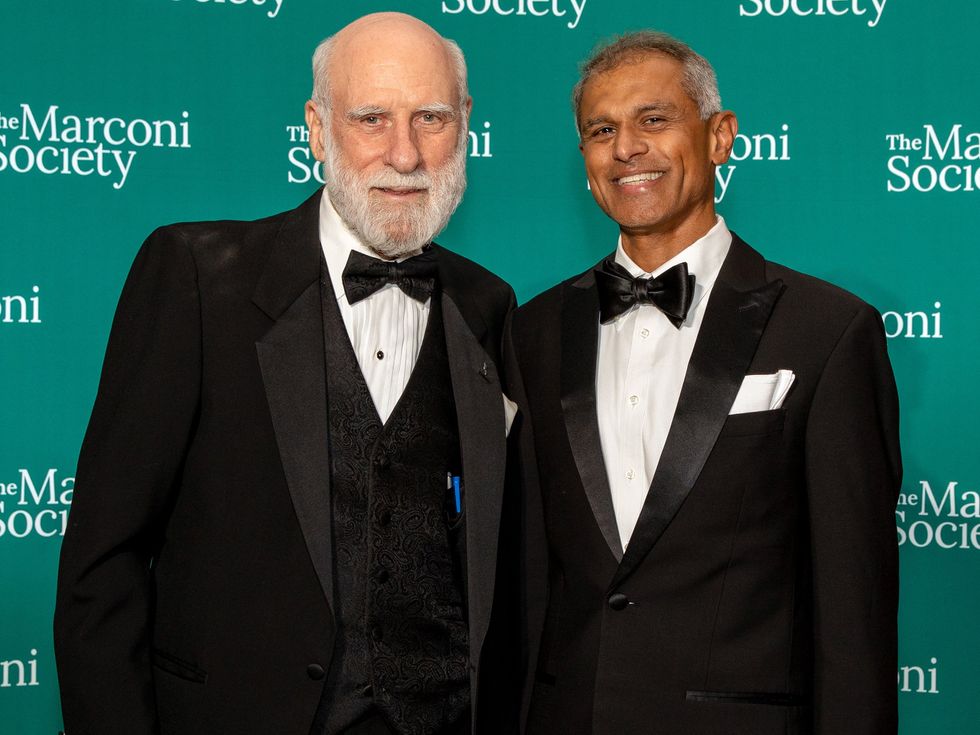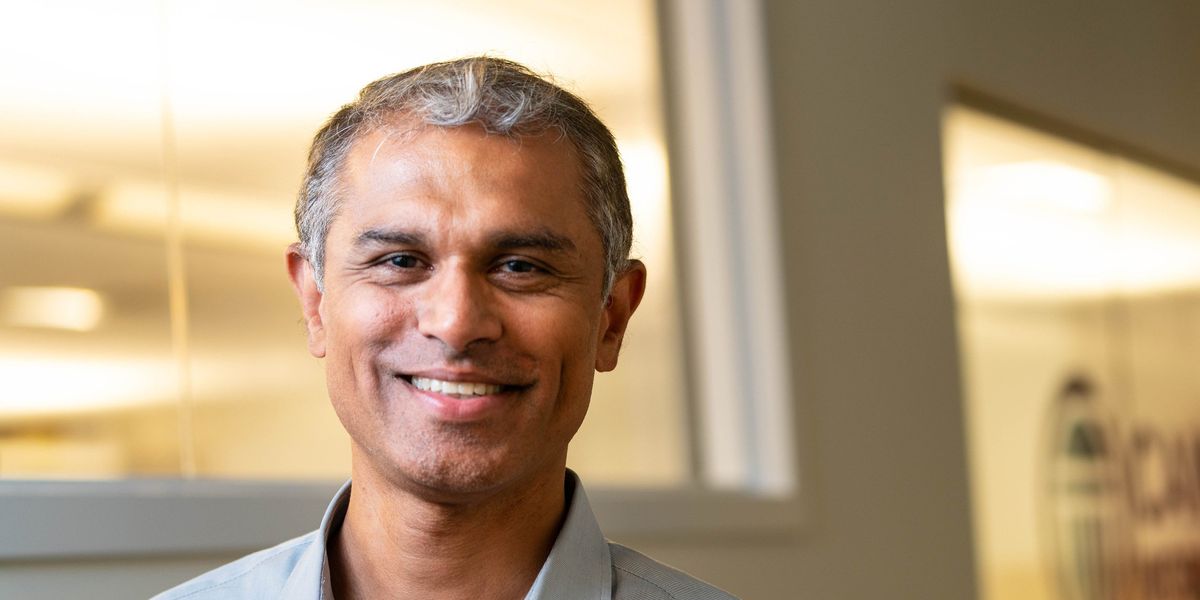Again in 2005, earlier than smartphones had been typically out there, MIT Professor Hari Balakrishnan was so fed up with commuting delays in Boston that he constructed a cellular system to watch highway situations.
Hari Balakrishnan
Employer
MIT
Title
Professor
Member grade
Fellow
Alma maters
Indian Institute of Know-how, Madras, and the College of California, Berkeley
He and his analysis staff at MIT’s Laptop Science and Synthetic Intelligence Laboratory developed CarTel, brief for automobile telematics. Utilizing sign processing and machine studying, their sensing machine for automobiles was in a position to infer the presence of potholes and different impediments from modifications in visitors circulate, which it measured with GPS and an accelerometer. Their analysis gained a number of awards, and the system was lined by The Boston Globe.
In 2010 Balakrishnan and two cofounders commercialized CarTel by launching Cambridge Cell Telematics. Immediately the Massachusetts firm is the biggest telematics service supplier on the planet. Insurance coverage firms, automobile producers, rideshare companies, and public businesses use CMT information to evaluate driver conduct, encourage safer driving, dispatch roadside help, and extra.
Balakrishnan, an IEEE Fellow, is that this yr’s Marconi Prize winner for his “basic discoveries in cellular sensing, networking, and distributed methods.” The award, given by the Marconi Society, is taken into account to be the highest honor in communications.
“On paper this award honors me, nevertheless it actually is a recognition of my 30-plus Ph.D. college students, postdocs, collaborators, and the staff at CMT who’ve labored extremely arduous in artistic methods to take analysis concepts and have them actually affect the world,” he says. “It honors the sphere of cellular sensing and networked methods.”
Hari Balakrishnan talks to the Marconi Society about his profession highlights and his ideas on receiving the prize.Marconi Society
Utilizing information to make driving safer
Balakrishnan got here up with the thought for CarTel whereas speaking with fellow MIT Professor Samuel Madden, a director of the college’s Knowledge Techniques and AI Lab and an skilled on information administration and sensor computing.
“I informed him we must always begin a analysis venture that takes sensors that we each know quite a bit about, connect them to vehicles, measure what’s occurring, after which attempt to perceive the information,” Balakrishnan recollects. “This was earlier than iPhones, Androids, and Google Maps.”
They later based CMT, with Madden serving as its chief scientist.
“CarTel was one of many first initiatives in cellular sensing,” Balakrishnan says. “We confirmed that it may work at scale.
“I used to be making an attempt to determine methods to commercialize it utilizing the notion of cellular sensing for social good.”
Assist got here in 2009 from William V. Powers, a seasoned gross sales govt who turned Balakrishnan’s enterprise accomplice. He’s additionally a CMT cofounder and the corporate’s CEO.
Balakrishnan says that though the startup had the expertise, it didn’t have a enterprise mannequin. After studying articles about how insurance coverage firms had been utilizing costly {hardware} to measure folks’s driving to set premium costs and uncover fraudulent claims, they discovered their mannequin.
“Our mission is to make the world’s roads and drivers safer.”
“It clicked in my head that we had proven, in precept, how to do this with shopper telephones and cheap Web of Issues [IoT] gadgets that could possibly be put right into a automobile with out skilled installers,” he says.
That early system developed into DriveWell, an AI-driven platform that gathers information from displays together with accelerometers, gyroscopes, and place sensors in smartphones, dashcams, and IoT gadgets such because the DriveWell Tag.
The platform combines the knowledge with contextual information to create an image of how drivers are working their automobiles, measuring components comparable to arduous braking, extreme dashing, and telephone distraction, Balakrishnan says.
“Our mission is to make the world’s roads and drivers safer,” he says.
DriveWell has supplied companies to greater than 30 million automobiles thus far. Insurance coverage firms together with Admiral, Discovery, HUK-Coburg, MS&AD, and USAA use CMT’s applications to supply reductions to higher drivers. CMT lately partnered with Hyundai to supply its prospects real-time roadside help and restore companies. There are additionally DriveWell, FuelStar, and Openroad cellular apps for motorists who need suggestions about their driving.
The primary indoor location system
Balakrishnan has created different methods that use sensors for sensible functions. Between 1999 and 2004, he oversaw the event of the Cricket indoor location system. It mixed radio frequency and ultrasound applied sciences. Beacons mounted on partitions and ceilings publish data on an RF channel, which sends out a chirping sign. The beacon then sounds out a corresponding ultrasonic pulse. Receivers connected to cellular gadgets hear for the RF alerts and the ultrasonic pulse. Cricket makes use of the totally different speeds of sound and of RF to calculate the space between the receiver and the beacon.
The system supplied area identifiers, place coordinates, and orientation. Cricket supplied distance ranging and positioning precision of between 3 and 5 centimeters. It was utilized in areas the place GPS didn’t work nicely, comparable to hospitals, workplace buildings, and analysis facilities.
“GPS solely works outdoor,” Balakrishnan says. “Even in the present day, you’ll be able to’t get GPS alerts inside. When your apps present you the situation inside, it’s utilizing different applied sciences.”
The analysis staff open-sourced the {hardware} and software program, and greater than 1 million items had been constructed and deployed.
“This strategy didn’t scale to each machine on the planet,” Balakrishnan says, “as a result of including ultrasonic {hardware} to each machine is just not sensible. Nevertheless, with trendy smartphones able to sending and receiving ultrasonic alerts on their audio system and microphones, the strategy developed in Cricket may turn into helpful sooner or later. Certainly, some latest proposals for contact tracing for COVID-19 have used this strategy.”
 This yr’s IEEE Medal of Honor recipient Vint Cerf congratulates Marconi Prize winner Hari Balakrishnan on the Marconi Awards Gala, held on 27 October in Washington, D.C.Marconi Society
This yr’s IEEE Medal of Honor recipient Vint Cerf congratulates Marconi Prize winner Hari Balakrishnan on the Marconi Awards Gala, held on 27 October in Washington, D.C.Marconi Society
A love of analysis and academia
Balakrishnan earned a bachelor’s diploma in pc science in 1993 from the Indian Institute of Know-how, Madras. He picked the sphere, he says, as a result of he thought it could let him make sensible use of arithmetic.
“I knew nothing about pc science,” he says. “I had by no means programmed a pc earlier than. However I knew I used to be excited by issues that had been mathematical in nature, and I loved each math and physics enormously. After a few yr and a half, I felt like I understood what the sphere was about. By the point I completed my undergraduate diploma, I completely cherished it.”
Whereas pursuing a Ph.D. in pc science on the College of California, Berkeley, he turned keen about conducting analysis, he says. He loved it a lot, he says, that he needed to make a profession of it.
He’s additionally identified for his early analysis on methods to enhance wi-fi networks—which could be discovered within the IEEE Xplore Digital Library and which gained the 1998 Affiliation for Computing Equipment’s Doctoral Dissertation Award.
Within the closing yr of his Ph.D., in 1998, he determined to pursue an educational profession. He interviewed for a college place at MIT and knew instantly it was the place he needed to work, he says. The college employed him that yr, and he has labored there ever since.
“I felt like this was the place the place folks had been on the identical wavelength as me,” he says. “It’s at all times good to go to a spot the place folks respect what you do.”
Regardless of his entrepreneurial success, Balakrishnan continues to show.
“I simply actually get pleasure from working with college students and simply love analysis,” he says. “I get pleasure from instructing college students and, frankly, they educate me as a lot as I educate them.”
The IEEE group
Balakrishnan says he intially joined IEEE as a scholar to get the discounted charge for membership and convention registrations. However after he started working, he realized that it’s essential to be a part of a “skilled group that has like-minded individuals who care in regards to the fields that I care about,” he says. “IEEE has benefited my profession as a result of I’ve been at conferences and occasions the place I’ve made skilled connections that may final a lifetime.”
He’s additionally a member of the U.S. Nationwide Academy of Engineering and the American Academy of Arts and Sciences.
IEEE acknowledged him in 2021 with its Koji Kobayashi Computer systems and Communications Award for “broad contributions to pc networking and cellular and wi-fi methods.”
From Your Website Articles
Associated Articles Across the Internet

